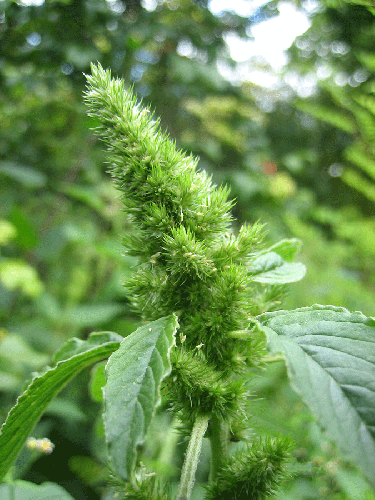Wild harvest: Part 3 – eating weeds
Safely identifying, harvesting, preparing and storing two of the most common edible weeds.

Most of us probably go through life ignoring the “weeds” around us, or we spend summers battling them in our lawns, gardens and field crops. Weeds are no different than other plants, but they sometimes become problematic when they displace more desirable plants. Weeds do have beneficial uses, and many of them are great to eat. One such plant is the ubiquitous Chenopodium album, which has several common names including lamb’s quarters, white goosefoot and pigweed. Other plants share the same common names so I will refer to it as Chenopodium. Chenopodium is one of the most common weeds found, and readily colonizes disturbed soils, gardens and roadsides. In fact, I dare you to check your garden and not find it growing there! Chenopodium is easily recognized by its waxy, diamond-shaped leaves. There are two inedible species of Chenopodium, but they are recognized by leaves that smell like turpentine when crushed. Always be sure of your plant identification before ingesting it. When in doubt, don’t eat it.
The simplest way to enjoy Chenopodium is to harvest the tender leaves and eat them raw or in a salad. As leafy greens go, it is among the highest in vitamin and mineral content. Basically, the greens can be used in the same ways as any other leafy greens (like spinach), and is great raw, cooked, stir-fried, added to soup, etc. The leaves can also be dried or dehydrated and stored for later use. Dried leaves can also be ground into a dark flour. One very under-utilized part of Chenopodium is the seed. Chenopodium album is actually a relative of the now popular grain, quinoa (Chenopodium quinoa). The high-protein seeds of C. album can be used similarly to quinoa, or can be ground up and used as flour.
simplest way to enjoy Chenopodium is to harvest the tender leaves and eat them raw or in a salad. As leafy greens go, it is among the highest in vitamin and mineral content. Basically, the greens can be used in the same ways as any other leafy greens (like spinach), and is great raw, cooked, stir-fried, added to soup, etc. The leaves can also be dried or dehydrated and stored for later use. Dried leaves can also be ground into a dark flour. One very under-utilized part of Chenopodium is the seed. Chenopodium album is actually a relative of the now popular grain, quinoa (Chenopodium quinoa). The high-protein seeds of C. album can be used similarly to quinoa, or can be ground up and used as flour.
There are two food safety concerns with C. album. One is that it readily absorbs nitrates from contaminated soils, so Michigan State University Extension recommends being conscious of where you harvest from, making sure it is not growing in contaminated soil. The other concern is that Chenopodium, like spinach, contains oxalates, which can lead to kidney stones if too much raw material is consumed. This is a pretty rare occurrence that usually happens when extreme amounts are consumed, but moderation is a good idea.
Earlier I mentioned that Chenopodium is sometimes called pigweed. It turns out that pigweed is also the common name for a completely different species of weed that is also edible and readily available this time of year. Redroot pigweed, Amaranthus retroflexus, is a member of the ancient amaranth genus. There are 60 plants in the amaranth genus and all are edible, so distinguishing individual species is not necessary, however the redroot version is easily recognizable in the landscape due to its typically (but not always) red stem. Amaranth can be utilized in all the same ways as Chenopodium, but additionally, the seeds can be popped like popcorn. It also contains a high amount of protein in its seeds (up to 16 percent) and was often considered a sacred and powerful food by ancient Greek, Aztec, Mexican and Indian cultures.
As with Chenopodium, Amaranthus can contain nitrates if grown in contaminated soil, and is high in oxalates. MSU Extension recommends following the same precautions for consuming both plants. Now, let’s enjoy the rest of summer and start eating up those weeds!
For more on wild harvest read Wild harvest: Part 1 – wild turkey.



 Print
Print Email
Email


